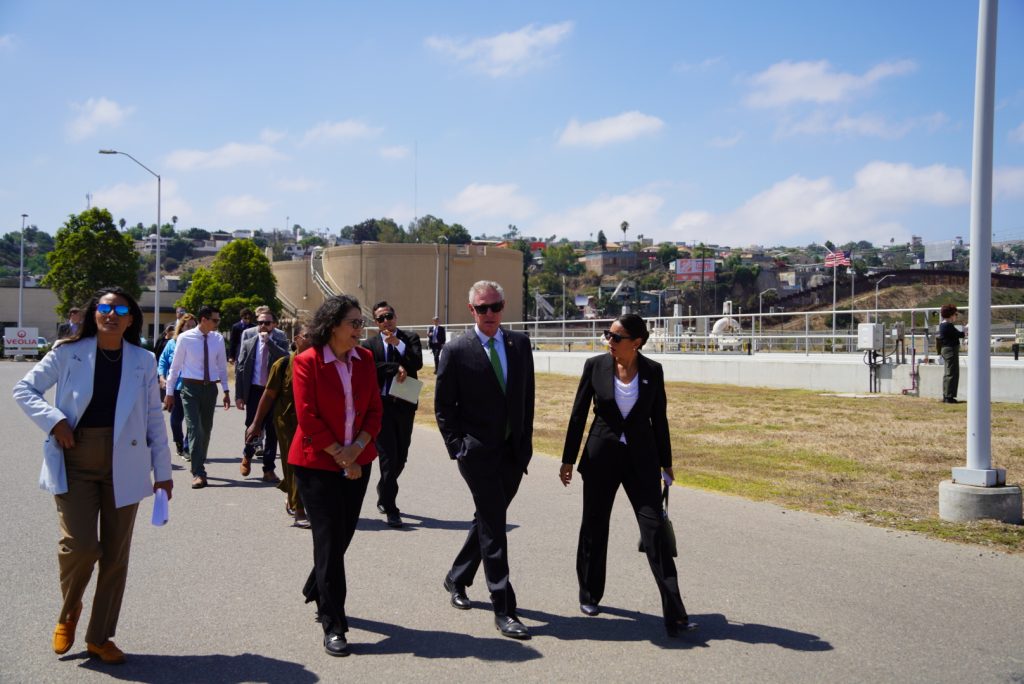
The repairs and expansion of the South Bay International Wastewater Treatment Plant will be undertaken by PCL Construction of Long Beach, Calif., officials announced last week.
The expansion, along with other wastewater infrastructure projects both planned and underway on both sides of the border, will eliminate an estimated 90 percent of the untreated sewage that is currently being dumped into the Pacific Ocean.
The plant is currently in need of large-scale rehabilitation, and it is currently out of compliance with its National Pollution Discharge Elimination System (NPDES) permit, a violation of the Clean Water Act.
This project will not only repair the plant’s myriad issues, but also, it will double its treatment capacity from 25 million gallons per day (MGD) to a 50 MGD average flow, with peak flow capacity at 75 MGD.
The plant has been called the “gem” of efforts in the U.S. to quash the ongoing Tijuana sewage crisis.
SBIWTP’s full rehabilitation and expansion is expected to take years, but it will be designed as it’s built, in effort to expedite the construction process. Typically, projects undergo a design phase prior to ground breaking. The International Boundary and Water Commission has not yet released a projected construction start date.
But Maria-Elena Giner, the IBWC’s commissioner, says residents can expect to see cleaner water and air well before the plant’s construction is complete. She also said she expects the treatment plant to come into compliance with its NPDES permit within 45 days.
The plant expansion’s latest total cost estimate is $600 million, the IBWC said in a statement.
Last year, after unexpected infrastructure challenges presented themselves, some estimates suggested that repairing and expanding the plant might cost as much as $1 billion. However, by implementing a design-build approach, the contractor is able to save money, said Frank Fisher, chief public affairs officer for the IBWC.
The agency has already begun work on other projects to address sewage infrastructure. Latest updates and projections for projects can be found here.
Meanwhile, U.S. Deputy Secretary of State Richard R. Verma and U.S. Representatives Scott Peters (CA-50), Juan Vargas (CA-52), and Sara Jacobs (CA-51) toured the SBIWTP on Aug. 29. Giner, who has been lauded by local officials for her efforts to fix the IBWC’s crumbling infrastructure, attended.
They were joined on the tour by California EPA Secretary Yana Garcia, U.S. EPA Region 9 Administrator Martha Guzman, U.S. Consul General in Tijuana, Christopher Teal, and Imperial Beach Mayor Paloma Aguirre.
Last year, the representatives requested a high-level state department visit as part of efforts to secure more funding to address the sewage crisis.
“One of the greatest challenges we’ve had as representatives of San Diego is getting Washington, D.C. to pay attention to serious problems people are facing 3,000 miles away,” Peters said in a statement. “That’s why we appreciate the officials from the State Department and EPA who are here with us today — so that they can experience what San Diegans have endured for decades. To smell the fumes, see the suffering businesses and closed beaches, and understand the environmental disaster we have on our hands.”
Peters has been a vocal advocate for increased sewage funding, alongside other local politicians and residents.
“To be clear, it’s taken us far too long to get to this point. Too long to identify the problem. Too long to get the permits we need,” Peters said. “But thankfully, we’re on a better path today, to the credit of leaders like Commissioner Giner, who has been a breath of fresh air and is taking the challenge seriously.”
Projects in the U.S. and in Mexico are progressing, albeit not without some delays.
“Finally, we’re moving forward,” Vargas said. “Finally, we see some progress, on this side of the border and on the Mexican side of the border. We’re working together.”




